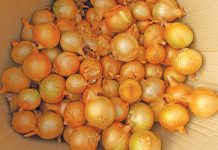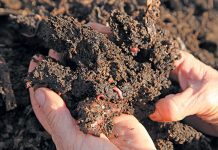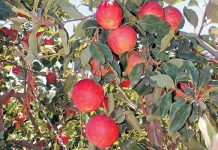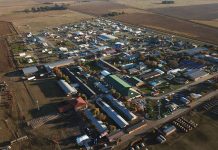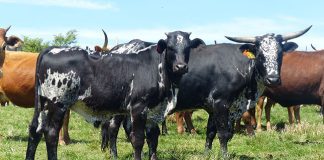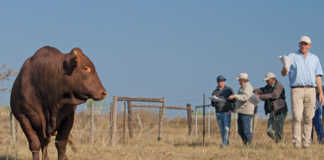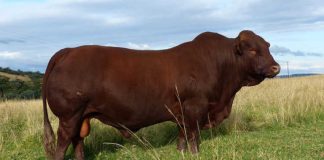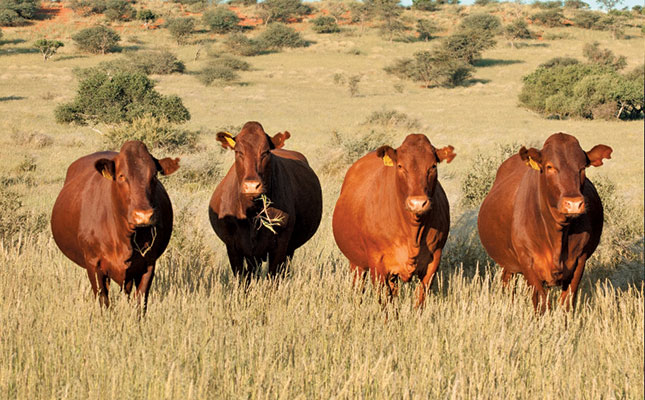
Photo: FW Archive
Livestock production systems are the world’s largest users of land resources, and the situation in Southern Africa is no different. Approximately 84% of the surface area of South Africa is available for agriculture, of which only about 13% is arable.
The greater part of South Africa is suitable only for extensive livestock production. The livestock value chain has a responsibility to be fully aware of these facts and that the industry stands to suffer as a result of global warming.
Mitigation of heat stress
Temperature, solar radiation, humidity and wind all affect animals directly, with temperature having the greatest direct effect on livestock production.
Most livestock perform at their best at a temperature between 4°C and 24°C. Given the effects of global warming, the temperature in large parts of Southern Africa are expected to rise more frequently above this comfort zone.
It therefore makes sense to select animals that are adapted to high temperatures, according to Prof Michiel Scholtz, specialist researcher at the Agricultural Research Council’s (ARC) Animal Production Institute.
The climate across Southern Africa varies from arid conditions in the west to humid and subtropical conditions in the north and east, while much of the central part is semi-arid.
Heat stress is a common cause of reproductive inefficiency, especially in beef cattle, as it negatively effects the fertility of a bull by decreasing semen quality.
This is a measure of the ability of semen to accomplish fertilisation, and semen quality does not return to normal for about eight weeks after exposure to heat stress due to the duration of the spermatic cycle. Heat stress influences reproduction and will, in the long run, become evident in a decrease in the number of calves born in an affected herd.
Georgette Pyoos-Daniels, a junior researcher at the ARC Animal Production Institute, writes that even a single day of heat stress may reduce the semen quality and potential fertility of a bull. This is why early, seasonal warning systems are set to become more important in the quest to mitigate the effects of global warming in future.
According to Scholtz, farmers would be well advised to consider multi-sire breeding and/or bulls from tropically adapted genotypes to mitigate possible male infertility, depending on advanced warning.
Local breeds
The Southern African beef cattle industry includes indigenous breeds such as the Bonsmara, Nguni, Afrikaner, Drakensberger and Tuli, which are all known for improved productivity and fertility. According to the researchers, these breeds are well adapted to the harsh local production environment and exhibit a low susceptibility to diseases.
A recent study by the ARC showed that, after being without water for 24 hours, the Afrikaner suffered a weight loss of only 2%, in contrast to a 15% loss in the European breed used as comparison. A 24-hour period of water deprivation also did not reduce the feed intake of the Afrikaner, whereas that of the European breed was reduced by 24%.
The Nguni breed is the most tick-resistant of all cattle breeds in South Africa and its production levels are the least affected by ectoparasites. Tick infestation in the Nguni resulted in a weaning weight reduction of only 4,4kg, compared with 29,5kg for a European breed under situations of severe tick infestation.
The 2015/2016 summer was the warmest and driest year ever recorded in South Africa. The preceding nine summers produced an average of 1,9 heatwaves with 6,5 heatwave days, whereas research conducted by Pyoos-Daniels showed that in the summer of 2015/2016, the region experienced 12 heatwaves totalling 71 heatwave days.
Crossbreeding research
The Northern Cape Department of Agriculture and the ARC are running a crossbreeding project at the Vaalharts Research Station.
The objective, according to Anette Theunissen, a senior researcher in animal science at the Vaalharts Research Station in Jan Kempdorp, Northern Cape, is to cross indigenous Afrikaner, Bonsmara and Nguni cows (Sanga cattle) with Afrikaner, Bonsmara, Nguni, Angus and Simmentaler bulls to compare weaners of the respective crosses.
The weaning weights of crossbred Sanga-sired calves and Angus/Simmentaler-sired calves between the 2015/2016 and 2016/2017 seasons were compared, as the 2016/2017 was a wetter and cooler season.
Interestingly, the Sanga-sired calves and Angus/Simmentaler-sired calves presented the same 205-day corrected weaning weight (171kg) in 2015/2016. In contrast, the 2016/2017 summer season resulted in the weaning weight of the Angus/Simmentaler-sired calves being 27kg heavier than the Sanga-sired calves (210kg versus 183kg).
In the case of beef cattle, the effective use of crossbreeding should be seriously considered, according to the scientists.
The research at Vaalharts clearly indicates that cattle production under extensive farming conditions with relatively low levels of nutrition stands to benefit from terminal crossbreeding with small indigenous cows, ultimately improving the output of beef cattle farming.
Small-framed cows require markedly less feed than large ones, increasing the indigenous breeds’ efficiency. This is underscored by the potential increase in weaning weight of up to 26% per cow mated with European breeds, while the feed energy requirement increased only 1%.
In addition, and of importance for food security, is the use of locally adapted, low-input maternal breeds and the improvement of the production potential of the progeny by using terminal sire breeds. However, such a system will be viable only if the natural environment can support the higher production and if managerial demands are met.
Examples from South Africa indicate that cow productivity (defined as kilogram calf weaned per large stock unit mated) increased 15% with Simmentaler x Afrikaner crosses, and 21% with Angus x Nguni crosses.
When a F1 Afrikaner cow was used, cow productivity increased by up to 49%. In the case of the Charolais x Afrikaner cross, there was a 27% increase in the value of meat and 27% less feed consumed from weaning to harvest, writes Theunissen.
Increasing production
An effective way to reduce the livestock industry’s carbon footprint and support climate-smart production is to reduce animal numbers and increase production per animal.
Increased productivity generates less greenhouse gas emissions per unit of product.
Production systems and breeding objectives should therefore be designed so that they improve production efficiency and increase revenue from product sales. Breeding merely to achieve genetic change makes little sense.
Selection for many of the traditional traits, such as weaning weight and growth rate, will increase production, but not necessarily productivity or efficiency of production.
The cow-calf production cycle represents about 72% of the energy consumed from conception to slaughter. If cow maintenance requirements can be reduced, the feed energy requirements will be smaller, which will, in turn, reduce the input cost of the cow and thus improve efficiency.
Cow efficiency is a complex, multi-trait measure that varies according to differences in production environments and management systems.
The three main component traits that affect cow efficiency are weaning weight of the calf, feed requirements to produce the calf, and the frequency at which a calf is produced.
The ARC’s animal production scientists are investigating a selection index that will include these component traits for calf weaning weight, cow weight and number of calves produced at a specific age.
Additional efficiency traits
Alternative post-weaning efficiency traits, such as residual feed intake (RFI) and residual daily gain (RDG), have also been identified. RFI is improved by reducing feed intake without changing growth, whereas RDG is improved by increasing growth without affecting feed intake.
According to Scholtz, low-RFI animals emit less methane and eat less than high-RFI animals, resulting in more efficient cows. It is recommended that the two traits be combined in a selection index with economic weights for feed cost and body weight. – Compiled by Annelie Coleman
Email Prof Michiel Scholtz at [email protected], Georgette Pyoos-Daniels at [email protected], and Anette Theunissen at [email protected].




